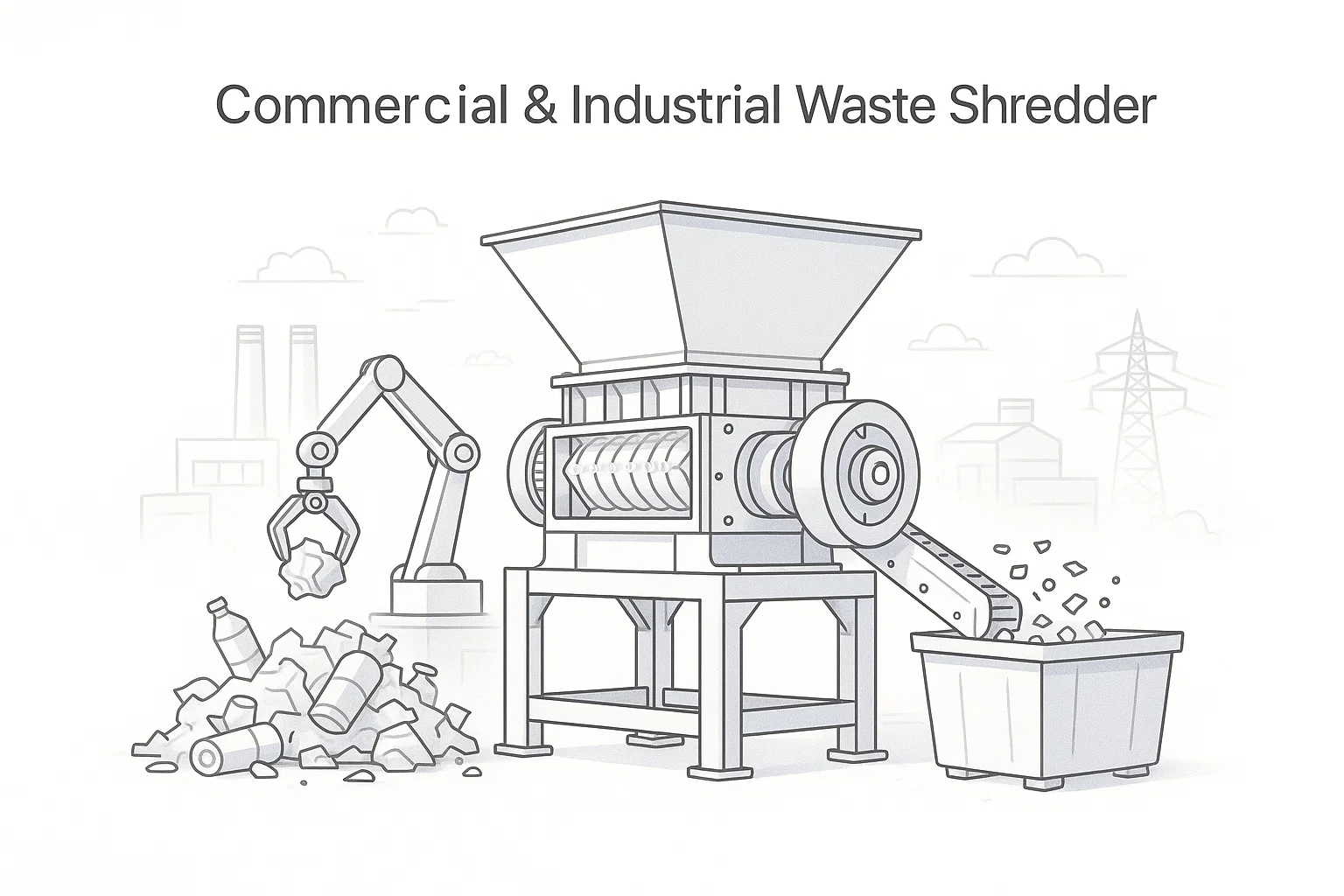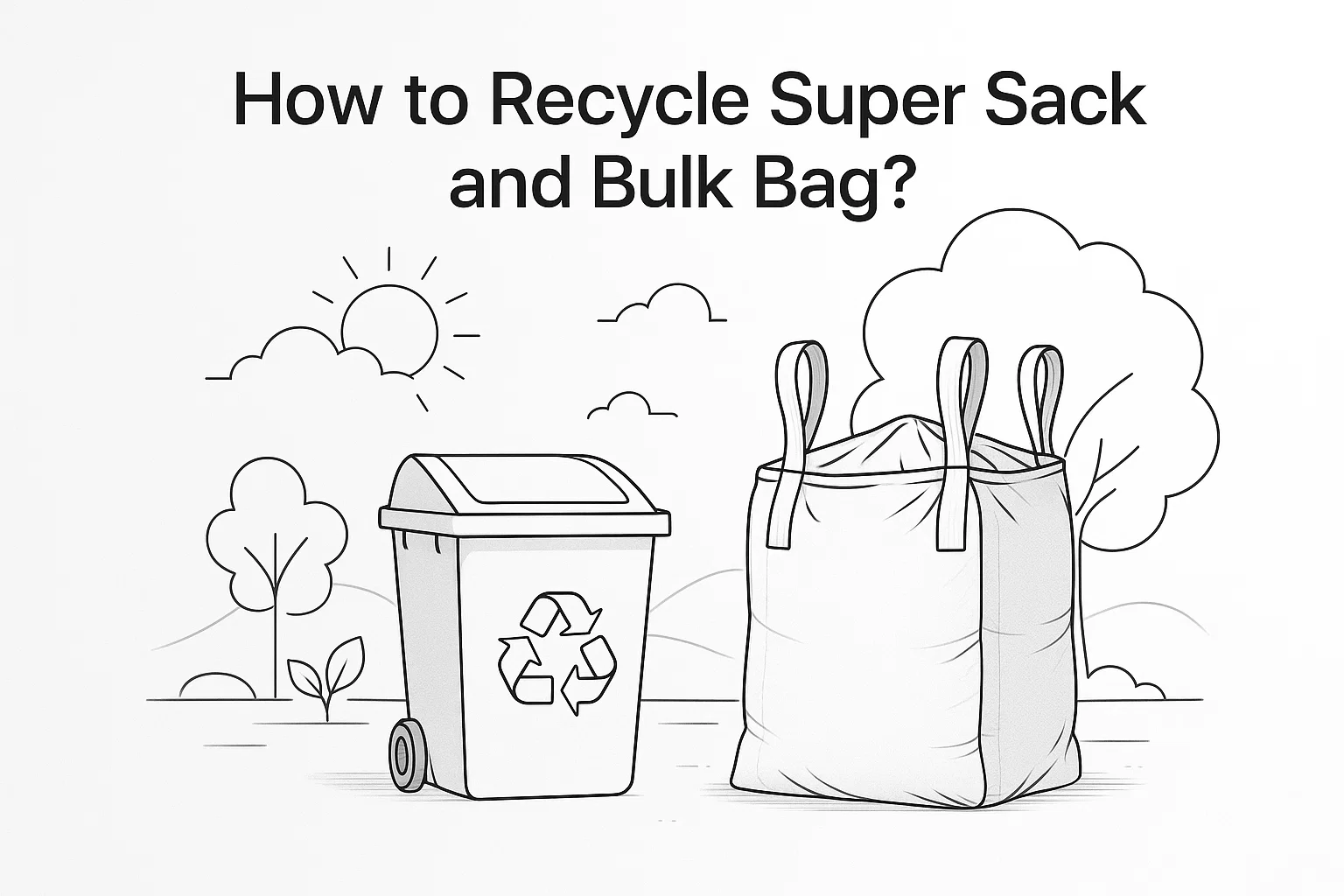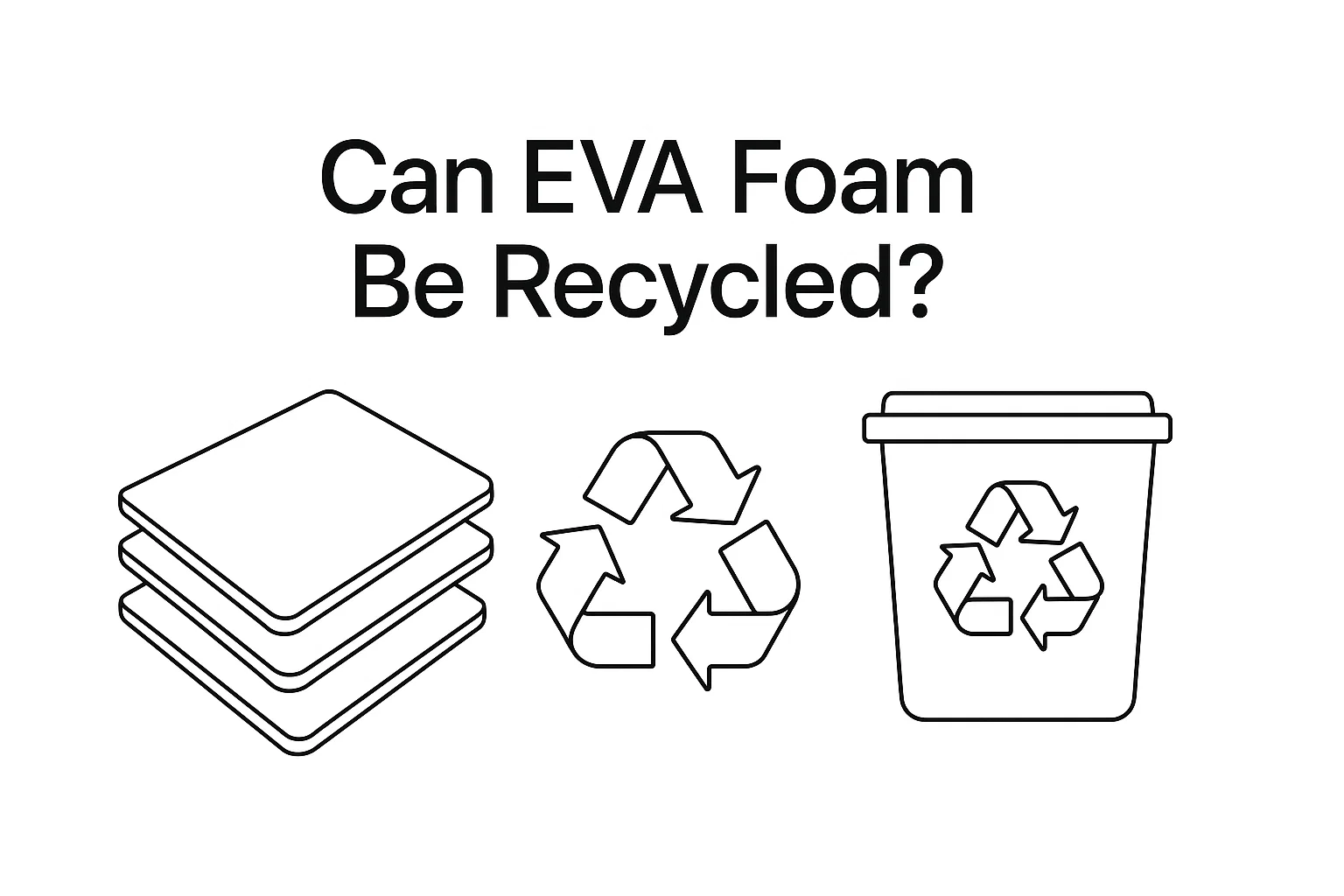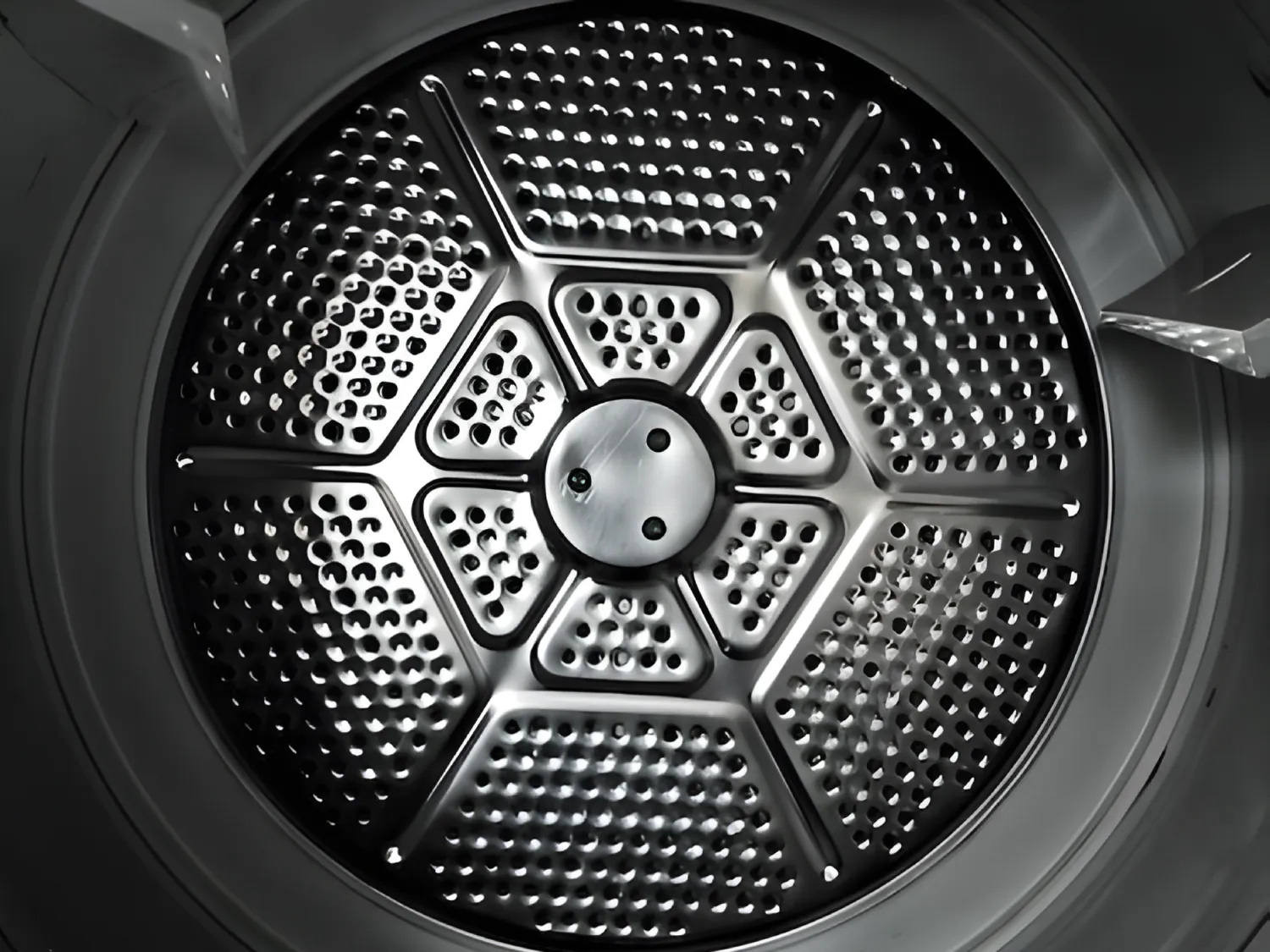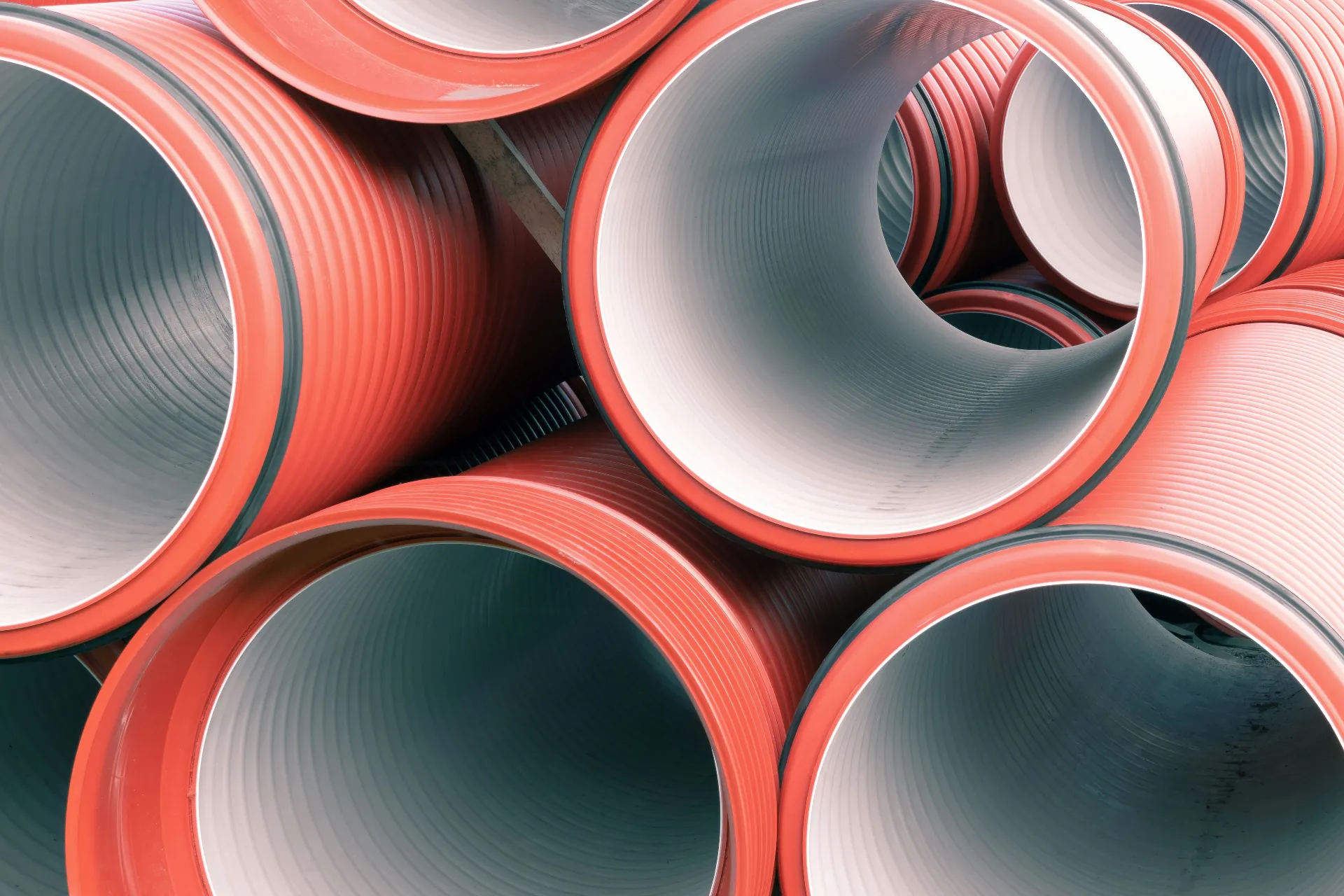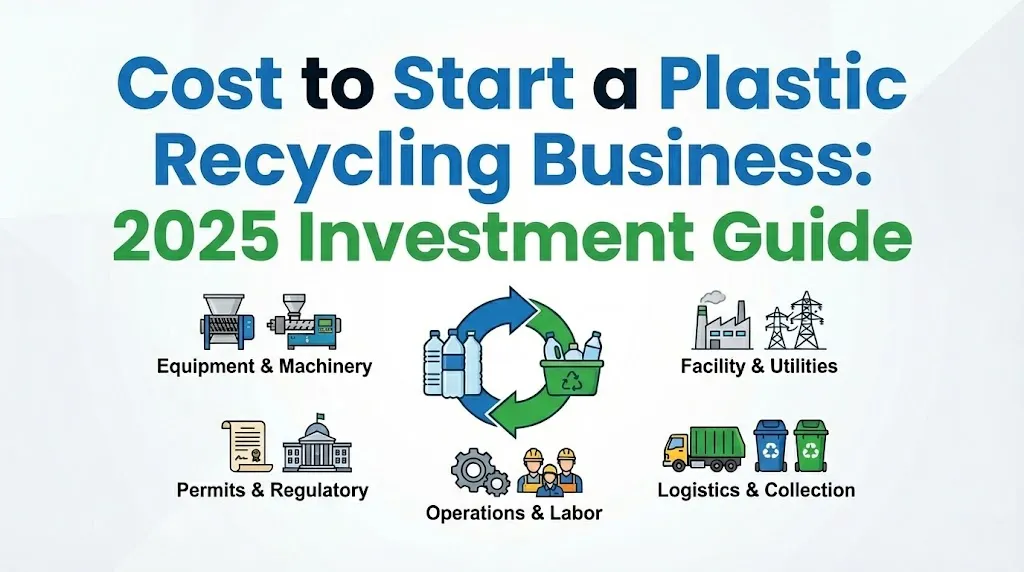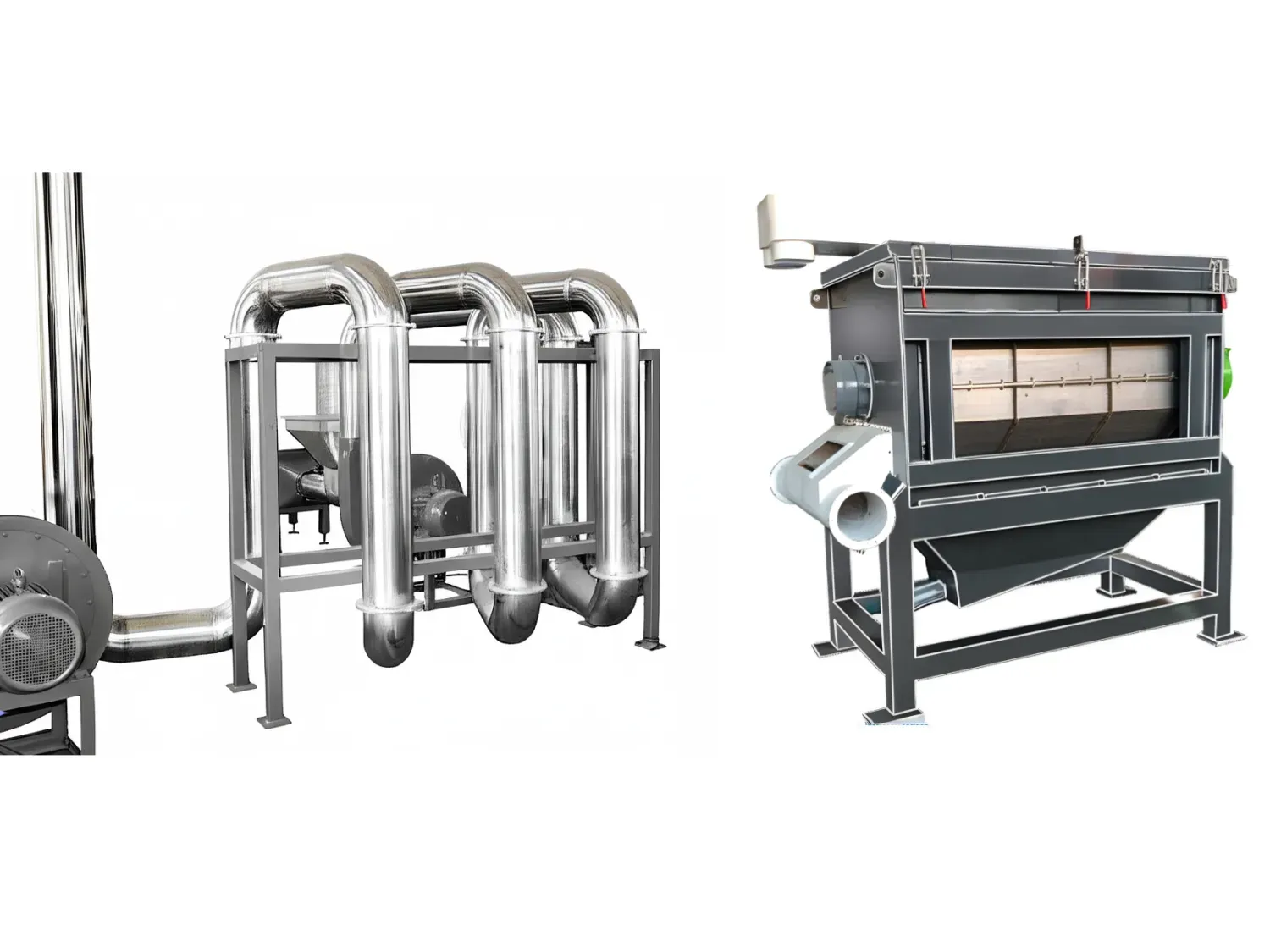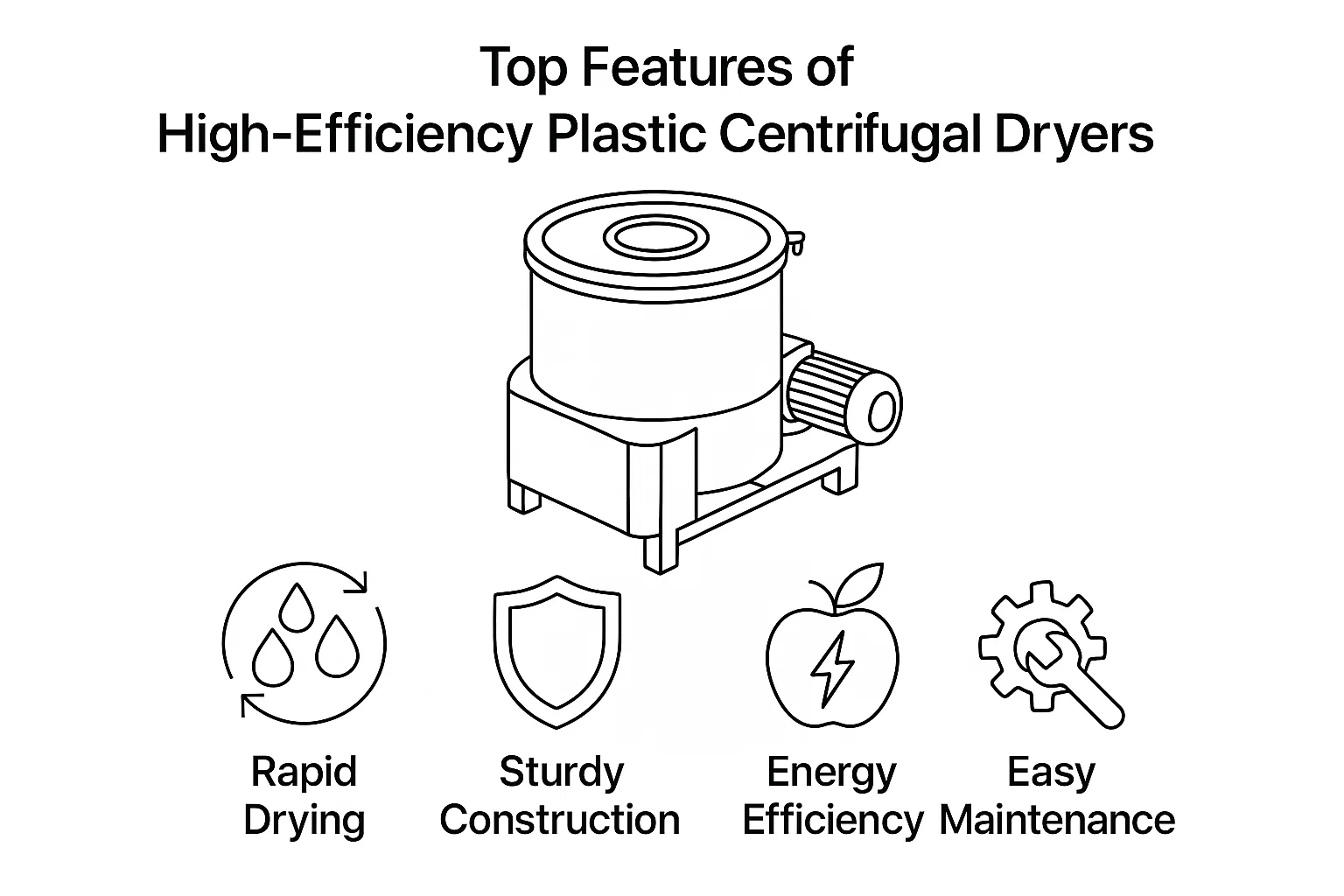Recycling Nieuws
Inleiding: De verborgen waarde van geweven polypropyleen
In de logistieke en productiesector vormen Super Sacks – technisch bekend als Flexible Intermediate Bulk Containers (FIBC's) – de ruggengraat van materiaaltransport. Van landbouw tot mijnbouw zijn deze duurzame geweven polypropyleen (PP) zakken onmisbaar. Hun duurzaamheid vormt echter een aanzienlijke uitdaging aan het einde van hun levenscyclus.
Ethyleenvinylacetaat (EVA) is alomtegenwoordig in de moderne productiesector. Van de zolen van high-performance schoenen tot cruciale componenten in de zonne-energiesector: dit materiaal wordt gewaardeerd om zijn veelzijdigheid. Naarmate de productievolumes echter toenemen, neemt ook de hoeveelheid industrieel schroot en post-consumer afval toe.
In de veeleisende wereld van plasticrecycling is vocht de vijand van kwaliteit. Voor fabrieksmanagers en inkoopspecialisten hangt het verschil tussen een hoogwaardige gerecyclede pellet en een defect product vaak af van één fase in het proces: drogen.
Hoewel wassen verontreinigingen verwijdert, blijft het plastic verzadigd. Als dit vocht niet effectief wordt verwijderd vóór het extrusieproces, leidt dit tot luchtbellen, structurele zwakheden en degradatie van het eindproduct.
Dit is waar de Plastic Centrifugaire Droger wordt de MVP van uw productielijn. Maar hoe bereikt u precies een snelle ontwatering zonder de enorme hoeveelheid energie te verbruiken die thermische verwarmers nodig hebben? Hier volgt een diepgaande duik in het werkingsprincipe van deze essentiële machines en waarom. Energiecel Technologie loopt voorop.
Wat is een kunststof centrifugaaldroger?
A Centrifugaaldroger (vaak aangeduid als een ontwateringsmachine) is een mechanische droogeenheid die is ontworpen om oppervlaktevocht van harde kunststoffen (zoals PET-vlokken, HDPE-korrels en PP-resten) en zachte kunststoffen (zoals folies) te verwijderen, direct na de wasfase.
In tegenstelling tot thermische drogers die warmte gebruiken om water te verdampen (een langzaam en energie-intensief proces), maken centrifugaaldrogers gebruik van kinetische energie. Door materiaal met hoge snelheid te laten roteren, scheiden ze mechanisch water van plastic en bereiden ze het materiaal voor op de extruder of de daaropvolgende thermische droogfasen.
De Energycle-standaard: Onze drogers zijn ontworpen om het vochtgehalte te verlagen tot wel 1-2% voor stijve kunststoffen, waardoor de werklast van de thermische systemen die hierna worden aangesloten, aanzienlijk wordt verlaagd.
De fysica van efficiëntie: hoe het werkt
Om de waarde van een Energycle-droger te begrijpen, moet men in de kamer kijken. De werking is een samenspel van aerodynamica, centrifugale kracht en mechanische impact.
1. De inname (voeding)
Nat kunststofmateriaal – vaak een mengsel van vlokken en water afkomstig van een frictiewasser of drijvende tank – wordt in het onderste gedeelte van de droger gevoerd, meestal via een schroeftransporteur of trechter. Een constante toevoersnelheid is cruciaal om verstopping te voorkomen en een gelijkmatige droging te garanderen.
2. Hoge snelheid rotatie en impact
In het hart van de machine bevindt zich een hogesnelheidsrotor uitgerust met speciaal gehoekte peddels of bladen.
- Rotatiesnelheid: De rotor draait met een hoog toerental (meestal tussen 1.200 en 2.000 toeren per minuut, afhankelijk van het model).
- Invloed: Wanneer het plastic binnendringt, raken de roterende schoepen de natte vlokken, waardoor ze direct versnellen. Deze impact helpt het water dat aan het plasticoppervlak kleeft, los te maken.
3. Centrifugaal Scheiden
Dit is het kernprincipe. De draaiende rotor genereert enorme middelpuntvliedende kracht, waardoor het materiaal naar buiten wordt geslingerd, richting de wanden van de machine.
- De Schermmand: Rond de rotor bevindt zich een robuust geperforeerd scherm (meestal gemaakt van roestvrij staal).
- Scheiding: De kracht stuwt het water door de gaatjes in het gaas (die speciaal zijn ontworpen om water door te laten, maar plastic binnen te houden). Het water komt in de buitenmantel terecht en stroomt weg via een uitlaat aan de onderkant.
4. Axiale beweging en luchtstroom
De peddels zijn niet alleen plat, ze zijn ook schuin geplaatst om een opwaartse of voorwaartse luchtstroom te creëren.
- Vervoer: Dit ontwerp tilt de plastic vlokken spiraalvormig naar de bovenste afvoerpoort.
- Secundair drogen: De snelle rotatie creëert een vacuümeffect, waardoor lucht wordt aangezogen. De wrijving tussen de schoepen en het plastic genereert kinetische warmte, die helpt bij het verdampen van restvocht op het oppervlak terwijl het plastic door de machine beweegt.
5. Ontlading
Het gedroogde plastic wordt via de bovenkant van de machine uitgeworpen, meestal in een cycloon of opslagsilo, klaar voor de volgende verwerkingsstap.
Waarom Energycle? De strategische voordelen
De juiste keuze maken Centrifugaaldroger-ontwateringsmachine voor het drogen van kunststof Het gaat niet alleen om het verwijderen van water; het gaat om operationele efficiëntie. Daarom kiezen toonaangevende recyclingbedrijven voor Energycle:
1. Superieure vochtreductie
Efficiëntie wordt gemeten in procentpunten. Terwijl standaarddrogers vocht kunnen achterlaten in de 5%, streven high-performance units naar <2%. Dit beschermt uw extruder tegen schuimvorming, veroorzaakt door stoomontwikkeling in de cilinder.
2. Mechanisch "schrob"-effect
De wrijving die in een Energycle-droger ontstaat, doet meer dan alleen drogen; hij reinigt ook. De hogesnelheidsimpact verwijdert resten zand, papieren etiketten en fijnstof (microplastics) die de wastanks mogelijk hebben gemist, en fungeert als laatste polijststap.
3. Energie-efficiëntie versus thermisch drogen
Thermisch drogen is duur. Het vereist het verwarmen van lucht en het handhaven van de temperatuur. Mechanisch centrifugaal drogen gebruikt een fractie van de energie om het grootste deel van het water te verwijderen (tot wel 98%).
- Kostentip: Gebruik een centrifugaaldroger om het "makkelijke water" mechanisch te verwijderen en gebruik alleen thermische warmte voor de laatste restjes vocht. Dit zorgt voor de meest kosteneffectieve drooglijn.
4. Duurzaamheid en onderhoud
De verwerking van schurende kunststoffen veroorzaakt slijtage aan machines. Energycle-drogers zijn gebouwd met:
- Slijtvaste rotoren: Geharde stalen messen die bestand zijn tegen schokken.
- Zelfreinigende schermen: Lucht-/waterzuiveringssystemen om verstopping van het scherm te voorkomen.
- Zware lagers: Gelegen buiten de natte zone om besmetting te voorkomen en een lange levensduur te garanderen.
Toepassingen: stijve versus zachte kunststoffen
Het is van cruciaal belang dat u de machineconfiguratie selecteert op basis van uw materiaal:
- Harde kunststoffen (PET-vlokken, HDPE-flessen, ABS): Deze vereisen hoge toerentallen en agressieve peddelontwerpen. Het doel is maximale impact om water af te schudden.
- Zachte kunststoffen (LDPE-folies, geweven zakken): Deze zijn lastiger omdat ze de schermen kunnen verstoppen. Energycle maakt gebruik van speciale "Squeeze Dryers" of aangepaste centrifugaaldrogers met een lager toerental en grotere gaten in het scherm om de pluizige aard van de film te verwerken zonder de doorstroming te blokkeren.
Snelle vergelijking: drogen van hard versus zacht plastic
Het selecteren van de juiste centrifugeconfiguratie is cruciaal om machineblokkades te voorkomen en de gewenste vochtigheidsgraad te garanderen. Hieronder ziet u hoe de operationele parameters verschillen per materiaalsoort:
| Functie | Droger voor stijve kunststoffen | Droger voor zachte kunststoffen (folie/geweven) |
| Doelmaterialen | PET-vlokken, HDPE-korrels, ABS, PP-doppen | LDPE-folie, PP-geweven zakken, landbouwfolie |
| Rotorsnelheid (RPM) | Hoog (1.200 - 2.000+) Heeft een hoge G-kracht nodig om water af te voeren. | Gemiddeld (1.000 - 1.200) Voorkomt dat het materiaal gaat klonteren of smelten. |
| Zeef maaswijdte | Klein (2 mm - 3 mm) Houdt kleine fijne deeltjes vast en laat water afvoeren. | Groot (5mm+) Voorkomt dat pluizig materiaal het scherm verstopt. |
| Bladontwerp | Hoekige peddels Geoptimaliseerd voor impact en wrijving. | Veeg-/geleidingsarmen Ontworpen om het materiaal in beweging te houden en wikkelen te voorkomen. |
| Restvocht | < 1-2% | 3-5% (Vaak is een knijpdroger nodig voor minder goede resultaten) |
Conclusie: investeren in procesintegriteit
De Plastic Centrifugaire Droger Is de schakel tussen een vuile afvalstroom en een hoogwaardige gerecyclede pellet. Door gebruik te maken van centrifugale kracht, mechanische impact en luchtstroom, biedt het een snelle, energiezuinige oplossing die thermische methoden simpelweg niet kunnen evenaren voor het verwijderen van groot water.
Voor beheerders van recyclinginstallaties is de keuze duidelijk. Betrouwbare droogapparatuur beschermt uw downstream-machines, zorgt voor een consistente pelletkwaliteit en verlaagt uw energiekosten.
Beperkt uw huidige droogsysteem uw productiecapaciteit?
Ontdek de robuuste techniek van de centrifugaaldroger-ontwateringsmachine voor het drogen van kunststof bij Energycle en verbeter vandaag nog uw recyclinglijn.
In het moderne tijdperk van de circulaire economie is de Kunststof pelletiseermachine is niet zomaar een machine; het is de hartslag van de recyclingindustrie. Voor fabrieksmanagers en inkoopspecialisten is inzicht in deze apparatuur het verschil tussen operationele inefficiëntie en winstgevendheid met een hoge marge.
Bij Energiecel, ontwikkelen we machines die plastic afval – vaak gezien als een last – omzetten in hoogwaardige, marktklare grondstoffen. Deze gids onderzoekt de mechanismen van pelletiseertechnologie en waarom dit de hoeksteen is van duurzame productie.
Inleiding: De motor van plastic recycling
Een plastic pelletiseermachine is een gespecialiseerde industriële machine die is ontworpen om plastic afval (zoals folie, flessen en hard plastic) te smelten, te homogeniseren en te vormen tot uniforme pellets. Deze pellets dienen als grondstof voor fabrikanten die alles produceren, van leidingen tot verpakkingen.
Voor recyclingfabrieken is consistentie het doel. Een hoogwaardige pelletiseermachine zorgt ervoor dat gerecyclede pellets dezelfde dichtheid, hetzelfde vochtgehalte en dezelfde smeltindex hebben als nieuwe materialen, waardoor ze tegen een hogere prijs verkocht kunnen worden.
Hoe werkt een plastic pelletiseerder?
Hoewel het kernconcept simpel is – smelten en snijden – bepaalt de techniek erachter de kwaliteit van uw eindproduct. Hieronder vindt u de uitgebreide, stapsgewijze uitleg van het proces.
1. Voeden: de cruciale eerste stap
Het proces begint met het invoeren van plasticresten, korrels of vlokken in de trechter.
- De uitdaging: Door onregelmatig voeren ontstaan er onregelmatige en ongelijkmatige pellets.
- De oplossing: Moderne systemen gebruiken forcefeeders of cutter-compactors om lichte materialen zoals folies (PE/PP) effectief te verwerken. Dit zorgt ervoor dat de extruderschroef altijd "hongerig" is, maar nooit verstopt raakt, wat de doorvoer maximaliseert.
2. Verhitten en smelten (plastificeren)
Zodra het materiaal de cilinder binnenkomt, wordt het blootgesteld aan intense schuifhitte en externe verwarmingszones.
- De wetenschap: De roterende schroef veroorzaakt wrijving (schuifspanning), die een deel van het smeltwerk verricht.
- Ontgassen: Cruciaal is dat hoogwaardige pelletiseermachines de volgende eigenschappen hebben: vacuümontgassingszones. Hierdoor worden vocht en vluchtige inktdeeltjes uit de bedrukte kunststoffen verwijderd, waardoor luchtbellen en defecten in de uiteindelijke pellets worden voorkomen.
3. Extrusie en filtratie
Het gesmolten plastic, nu een dikke, viskeuze vloeistof, wordt door een filterzeef geduwd voordat het de matrijs bereikt.
- Filtratie: Een hydraulische zeefwisselaar filtert verontreinigingen zoals papieren etiketten, metaal of hout eruit. Zonder deze filter zou het eindproduct onbruikbaar zijn voor zeer precieze productie.
- Druk: Vervolgens wordt het gesmolten materiaal door een matrijskop geperst, die als "mal" voor de kunststofstrengen fungeert.
4. Het plastic koelen
Zodra het plastic de matrijs verlaat, moet het direct worden afgekoeld om zijn vorm te behouden.
- Strenge koeling: Bij traditionele systemen worden spaghetti-achtige draden door een waterbad geleid.
- Matrijs/waterring: Bij materialen zoals PE-folies gebeurt het snijden bij De pellets worden direct in een waterring gegooid voor koeling. Dit vermindert de benodigde ruimte en de benodigde arbeid.
5. Snijden in uniforme pellets
De laatste stap is het bepalen van de maatvoering.
- Strandpelletiseren: Gestolde strengen worden in een granulator getrokken en tot cilinders vermalen.
- Warme snede (matrijszijde): Roterende messen snijden het plastic terwijl het nog heet is en tegen de matrijs smelt.
- Het Resultaat: Uniforme, vrijstromende pellets, klaar voor verpakking, opslag of directe verkoop.
Soorten pelletiseersystemen: welke heeft u nodig?
De juiste selecteren Kunststof pelletiseermachine hangt volledig af van het type materiaal (stijf of folie) en de vochtigheidsgraad.
1. Strandpelletiseerlijnen
- Het beste voor: Technische kunststoffen, vaste maalgoed (ABS, PA, PC) en materialen met een hoge viscositeit.
- Voordelen: Eenvoudige bediening, eenvoudig onderhoud en uitstekend geschikt voor compounding.
- Nadelen: Vereist het handmatig aaneenrijgen van de strengen tijdens het opstarten.
2. Waterring-/matrijspelletiseerders
- Het beste voor: Recycling van post-consumerfolie (LDPE, HDPE, PP).
- Voordelen: Geautomatiseerd opstarten (geen strengverstrengeling), compacte afmetingen en kan effectief omgaan met materialen met hogere smeltstroomsnelheden.
- Energycle Inzicht: Onze waterringsystemen maken gebruik van een uniek mesontwerp dat ervoor zorgt dat de pellets netjes worden gesneden, zonder "staarten", waardoor ophoping in de droogsilo wordt voorkomen.
3. Onderwaterpelletiseerders
- Het beste voor: Productie van grote volumes en kleverige polymeren (TPU, TPE).
- Voordelen: Produceert perfect bolvormige pellets met een hoge bulkdichtheid.
- Nadelen: Hogere initiële investering.
Waarom Energycle? Het "kopersvoordeel""
In een markt die overspoeld wordt met generieke machines, onderscheidt de Energycle zich door zich te richten op Totale eigendomskosten (TCO).
- Schroefgeometrie: Onze schroeven zijn ontworpen met specifieke L/D (lengte-diameter) verhoudingen die zijn afgestemd op uw materiaal. Hierdoor is het energieverbruik per kilogram output lager.
- Duurzaamheid: Om slijtage door schurende gerecyclede materialen (zoals vuile landbouwfolie) tegen te gaan, maken wij gebruik van bimetalen cilinders en geharde schroeven.
- Intelligente besturing: Met onze PLC-systemen kunt u de smelttemperatuur en -druk in realtime bewaken. Zo verkleint u de kloof in vaardigheden van operators.
Conclusie
Een kunststofpelletiseermachine is meer dan alleen een hakselaar; het is een precisie-instrument dat de waarde van uw gerecyclede product bepaalt. Of u nu industrieel schroot of post-consumer afval verwerkt, de kwaliteit van uw apparatuur is direct gerelateerd aan de kwaliteit van uw pellets.
Door te kiezen Energiecel, U koopt niet zomaar een machine; u investeert in een proces dat efficiëntie, duurzaamheid en een hoger rendement op uw investering garandeert.
Bent u klaar om uw recyclinglijn te upgraden?
Neem vandaag nog contact op met het Energycle-team om te bespreken welk pelletiseersysteem het beste bij uw productiedoelstellingen past.
https://www.energycle.com/plastic-pelletizers/
Verander grof buisafval in winst met gespecialiseerde versnipperingstechnologie
In de kunststofrecyclingindustrie vormen weinig materialen zo'n uitdaging als kunststofbuizen. Of het nu gaat om dikwandige HDPE-waterleidingen, lange PVC-profielen of overtollige extruderbuizen, deze materialen zijn omvangrijk, taai en notoir moeilijk te verwerken met standaardapparatuur.
Het recyclingsproces van常见的树脂如PET, HDPE en PP omvat een complexe reeks stappen, van het knippen en wassen tot het cruciale taak van het drogen van de schoongemaakte plastic.



